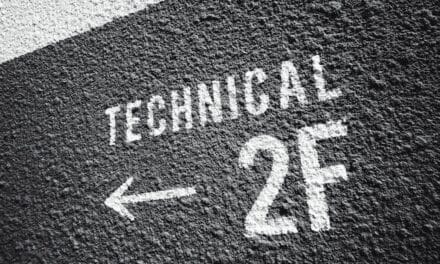In the dynamic landscape of modern business, finding the right balance is essential for success, especially for executives navigating the intricate relationship between strategic vision and operational demands. Have you ever wondered what differentiates high-performing leaders who inspire innovation while efficiently managing day-to-day operations? The answer lies in implementing effective tips for executives on balancing strategic vision with operational demands. This balance not only ensures that long-term goals are met but also keeps the organization agile in the face of immediate challenges. Whether you're leading a startup or an established enterprise, mastering this balancing act is crucial for driving growth and fostering a culture of excellence. In this article, we'll explore actionable insights and strategies that empower executives to align their vision with operational realities, resulting in robust leadership and sustainable success.
Understanding the Importance of Balancing Vision and Operations
In today's fast-paced business environment, executives face the daunting task of managing both a strategic vision and operational demands. Striking the right balance between these two critical aspects can determine an organization's success or failure. A compelling vision inspires teams and drives innovation, while effective operations ensure that this vision is realized efficiently.
The Role of a Strategic Vision in Executive Leadership
A strategic vision serves as the North Star for an organization, guiding decision-making and aligning efforts across various departments. It sets the tone for the company’s culture and motivates employees by providing a clear sense of purpose.
Inspires Innovation: A well-defined vision encourages creative solutions.
Drives Engagement: Employees are more likely to be committed when they understand the bigger picture.
Aligns Resources: Helps in allocating resources effectively towards achieving key objectives.
Operational Demands: What Executives Need to Consider
While a strategic vision is vital, executives must remain grounded in the operational realities that impact their organization. This involves understanding the limitations and capacities of their teams and resources.
Resource Allocation: Limited budget and manpower can strain operational processes.
Time Management: Executives must juggle multiple priorities without compromising operational efficacy.
Team Morale: Maintaining a motivated workforce while managing day-to-day tasks is crucial.
These challenges often lead to a conflict between long-term goals and immediate operational needs. Thus, the quest for tips for executives on balancing strategic vision with operational demands becomes indispensable.
Key Challenges Executives Face
Navigating the intersection of vision and operations isn't straightforward. Several common challenges complicate this balance:
Conflict Between Long-Term and Short-Term Goals: Executives often struggle with prioritizing strategic initiatives while addressing immediate operational tasks.
Resource Allocation Dilemmas: Decisions on where to invest resources can present difficult trade-offs.
Maintaining Team Morale: Striking a balance between operational focus and team motivation is essential for sustained productivity.
By identifying these challenges, executives can better prepare themselves to develop effective strategies for balance.
Tips for Executives on Balancing Strategic Vision with Operational Demands
To harmonize strategic vision with operational demands, consider the following actionable tips:
Prioritize Goals: Clearly define objectives that align with both the company’s vision and its operational capacity.
Foster Open Communication: Encourage feedback from team members to ensure that operational challenges are openly discussed and addressed.
Leverage Technology: Utilize tools and software that streamline operations while keeping strategic goals in mind.
For more insights on technological solutions that can aid executives, visit Microsoft.
Developing a Balanced Leadership Mindset
Fostering a mindset that equally values vision and operations can significantly benefit executives:
Embrace Flexibility: Be open to changing operational approaches as new information and challenges arise.
Cultivate a Growth-Oriented Culture: Promote an environment where learning and development are prioritized.
Implement Regular Check-Ins: Use regular meetings to assess progress on strategic goals while addressing operational challenges.
Incorporating these tips and techniques enables executives to maintain a harmonious balance between envisioning the future and managing the present.
Strategies for Implementation
After identifying the challenges and tips for executives on balancing strategic vision with operational demands, the next step is to implement useful strategies effectively. Proper implementation ensures that the organization not only has a clear vision but also executes it operationally with precision.
Creating a Strategic Roadmap
A strategic roadmap serves as a guiding document that aligns both vision and operations. To create an effective roadmap, consider the following components:
Clearly Defined Objectives: Establish measurable goals that stem from the organizational vision.
Actionable Tasks: Break down strategic objectives into specific, actionable tasks across different teams.
Timelines: Set realistic timelines for achievement, ensuring quick wins to maintain momentum.
Establishing Metrics for Success
To balance both vision and operational elements effectively, executives must monitor progress through defined metrics. This allows for real-time adjustments and fosters accountability within teams. Key metrics may include:
Performance Benchmarks: Regularly assess operational efficiency against predetermined benchmarks.
Employee Engagement Levels: Surveys can help gauge team morale connected to the organization's vision.
Customer Satisfaction Scores: Happy customers often reflect well-executed operations that align with a strategic vision.
Engaging in Continuous Professional Development
The ability to balance a strategic vision with operational demands is contingent upon ongoing learning and growth. Encourage executives to invest in:
Leadership Training: Programs focused on developing managerial skills can help leaders navigate challenges more effectively.
Networking Opportunities: Attending conferences and workshops offers fresh perspectives and best practices from industry peers.
Online Learning Resources: Utilize platforms like Harvard Business Review for access to articles and training that focus on effective leadership strategies.
By following these strategies, executives can take actionable steps towards achieving the delicate balance between their organization's strategic vision and the operational demands that accompany it, ensuring long-term success and growth.
Conclusion and Call to Action
As we’ve explored, the intricate balance between strategic vision and operational demands is essential for any executive aiming for success. It’s crucial not only to craft a compelling vision but to ensure it is grounded in operational feasibility. By implementing the tips for executives on balancing strategic vision with operational demands, leaders can position their organizations to adapt, thrive, and innovate in a competitive landscape.
Encouragement to Take Action
Start by assessing your organization’s current state. Reflect on the following questions:
Are your strategic goals clearly communicated and understood across all levels?
How efficiently are resources allocated to align with those goals?
Are teams encouraged to provide feedback on operational challenges?
Taking these steps will encourage a culture of continuous improvement and foster an environment where vision and operations work in harmony.
Resources for Further Reading
To gain deeper insights and continue your journey in effective leadership, explore resources from reputable organizations. For instance, the Society for Human Resource Management (SHRM) provides valuable articles and guides on leadership strategies that can further enhance your ability to balance vision and operational demands.
By committing to these principles and continuously striving for alignment, you will not only fulfill your organizational objectives but also cultivate a motivated and engaged workforce ready to tackle the challenges of the future. Embrace the journey of balancing your strategic vision with operational demands, and watch your organization flourish.
Embracing a Holistic Leadership Approach
Balancing strategic vision with operational demands requires an understanding that both elements are interdependent. Successful executives recognize that a holistic leadership approach can significantly impact their ability to steer their organizations effectively.
The Importance of a Holistic Mindset
A holistic mindset involves integrating various leadership dimensions to create an environment where strategic and operational elements complement each other. Here are some key aspects to consider:
Systems Thinking: Understand how different parts of the organization interact and affect one another.
Collaboration: Encourage cross-departmental collaboration to align strategies with operational execution.
Adaptability: Stay flexible and responsive to changing market conditions, ensuring that both vision and operational demands evolve together.
Techniques to Foster Holistic Leadership
Implementing the following techniques can help executives embrace a more holistic approach:
Multi-Disciplinary Teams: Form teams that consist of members from different functions to foster diverse perspectives and solutions.
Regular Strategy Meetings: Schedule periodic meetings focused on both long-term vision and current operational challenges to maintain alignment.
Feedback Loop Creation: Establish a system for gathering insights from employees at all levels, ensuring that front-line experiences inform strategic decisions.
For further reading on improving leadership techniques, you can visit McKinsey & Company for insightful articles and research.
By incorporating these strategies, executives can implement the tips for executives on balancing strategic vision with operational demands in a more integrated manner. This ultimately leads to improved organizational performance, employee engagement, and sustained growth.
Cultivating a Culture of Continuous Improvement
To effectively implement tips for executives on balancing strategic vision with operational demands, fostering a culture of continuous improvement within the organization is paramount. This culture encourages adaptability and resilience, enabling teams to respond effectively to both internal and external changes.
Understanding Continuous Improvement
Continuous improvement involves a series of ongoing efforts to enhance products, services, or processes. This philosophy not only supports operational efficiencies but also ensures that the strategic vision remains relevant and achievable.
Here are some key components to embrace:
Encouraging Innovation: Create an environment where employees feel confident to suggest new ideas or improvements.
Setting Clear Goals: Define specific, measurable objectives aligned with both operational and strategic priorities.
Regular Training and Development: Invest in employee training to arm them with the skills needed for both current and future challenges.
Strategies to Cultivate Continuous Improvement
Implement these effective strategies to embed continuous improvement within your organization:
Establish a feedback system: Regularly solicit input from all levels of staff to identify areas for improvement.
Use Data Analytics: Leverage data to evaluate current processes and identify inefficiencies.
Celebrate Successes: Acknowledge and reward teams that achieve improvements, reinforcing the behavior across the organization.
For more insights into cultivating a culture of improvement and learning, refer to Deloitte.
By prioritizing a culture of continuous improvement, executives can efficiently navigate the delicate balance between their strategic vision and the operational demands of their organizations. This proactive approach ultimately drives better outcomes and positions the company for long-term success.
The Role of Technology in Achieving Balance
In today's digital landscape, technology plays a crucial role in helping executives achieve a balance between their strategic vision and operational demands. Embracing the right technological tools can streamline processes, provide valuable insights, and facilitate better communication across teams, ultimately enhancing decision-making capabilities.
Key Technologies to Leverage
Here are some essential technologies that can support executives in executing the tips for executives on balancing strategic vision with operational demands:
Project Management Software: Tools like Asana or Trello can help manage tasks and align efforts with strategic objectives, ensuring that everyone is on the same page.
Data Analytics Platforms: Utilizing platforms like Tableau or Google Analytics enables data-driven decisions by providing insights into performance metrics and operational efficiencies.
Collaboration Tools: Software such as Slack or Microsoft Teams fosters real-time communication, allowing teams to collaborate effectively while addressing both strategic and operational aspects.
Best Practices for Integrating Technology
When integrating technology to balance vision and operations, consider these best practices:
Assess Organizational Needs: Before implementing new tools, evaluate specific demands and processes that require enhancement.
Train Employees: Ensure staff are adequately trained to use new technologies, maximizing their effectiveness and minimizing resistance to change.
Regularly Review Outcomes: Continuously assess the effectiveness of technological solutions and make adjustments as necessary to improve alignment with strategic goals.
For additional insights on leveraging technology for business effectiveness, visit Gartner for research and articles on industry trends.
By strategically incorporating technology into organizational processes, executives can more effectively balance their strategic vision with operational demands, leading to enhanced performance, innovation, and overall success.
Frequently Asked Questions
What are the key components of balancing strategic vision and operational demands?
Balancing strategic vision and operational demands involves clearly defining objectives, fostering open communication, leveraging technology, and establishing metrics for success. Each of these components ensures that both long-term goals and daily operational tasks are aligned within the organization.
How can technology assist in balancing these aspects?
Technology can streamline processes, provide valuable insights through data analytics, and facilitate collaboration among teams. Tools such as project management software and communication platforms help maintain alignment between strategic initiatives and operational execution, making it easier for executives to achieve balance.
What role does employee engagement play in this balance?
Employee engagement is critical in maintaining the balance between strategic vision and operational demands. Engaged employees are more likely to understand the organization's goals and contribute to achieving them. Encouraging feedback and involving staff in the decision-making process enhances their commitment and morale.
How often should executives reassess their strategic goals and operational processes?
Executives should regularly assess their strategic goals and operational processes to ensure they remain aligned with the evolving business environment. Quarterly reviews or bi-annual strategy sessions can help identify areas for improvement and adapt to changing market conditions.
Can small businesses apply these tips for balancing vision and operations?
Absolutely! The tips for executives on balancing strategic vision with operational demands are applicable to organizations of all sizes, including small businesses. By adapting these strategies to their specific context, small businesses can drive growth and improve operational efficiency while staying true to their strategic vision.





